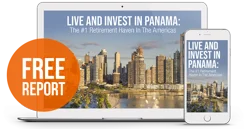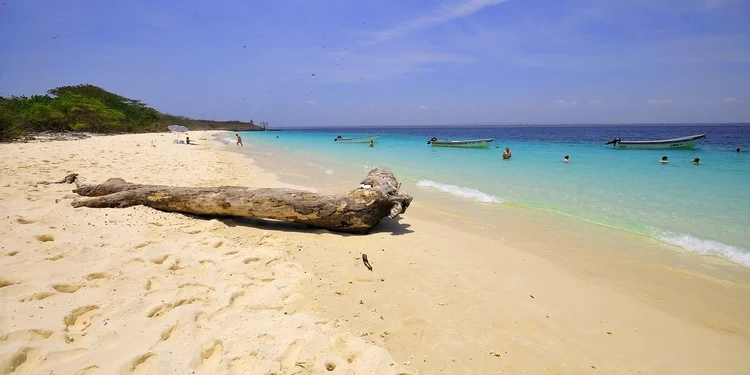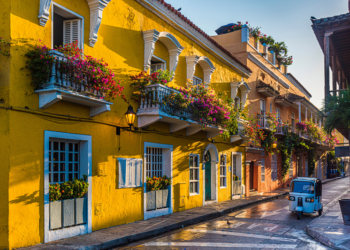All at once, the air was alight, sparkling and crackling. Smoke and sparks cascaded overhead and in all directions. Men were setting off roman candles just feet away and throwing entire bricks of firecrackers atop already burning fires in the streets all around the crowded square.
I looked over at April in time to see burning embers landing on her hair and clothes. I swatted them away then looked down to make sure I wasn’t ablaze myself.
It was New Year’s Eve 2014. I was standing amidst the mob in the central square of Las Tablas, Panama. Two much younger friends, one a former student of mine, had suggested this would be a great way to ring in 2015. I hoped we all survived the party and comforted myself with the thought that one of the young friends with us is a professional firefighter back in the United States.
How This Adventure Began

I’m a retired schoolteacher from Texas. How did I end up celebrating New Year’s Eve in Panama, dancing for hours with thousands of strangers in the streets of Las Tablas?
My partner April and I had moved the year before to Santa Fe, another small Panamanian town. Las Tablas is on the Pacific coast; Santa Fe is in the mountains about three hours away.
Back in the States, my new year’s eves were much, much quieter. Usually, I was asleep before midnight. Looking back, I see my Las Tablas New Year’s 2015 blowout as a fitting metaphor for my new life in Panama in general.
I heard the word “expat” for the first time at a party in Austin six years ago. A gentleman making small talk over cocktails told me about a waterfront community in Uruguay developed specifically for expats.
I went online the next day to Google the word and discovered a world of possibility that had never before occurred to me.
My 30-year tenure teaching in Texas’ public schools was winding down. I was coming face-to-face with retirement… and now I was finding that there are people out there—average Americans like me, I came to understand—who had pulled up stakes at this stage and reinvented their lives in exotic locales around the world. And, in their stories I found online, they seemed ecstatically happy about the whole thing.
April was still at her job but didn’t want to be for much longer. She and I were looking at retirement on a schoolteacher’s pension.
With ever-escalating taxes, ridiculous rent, astronomical cost of health insurance, and all the other financial baggage of life in modern America, we were facing a pretty meager existence Stateside unless we kept working. But we didn’t want to keep working.
Get Your Free Panama Report Today!
Simply enter your email address below and we'll send you our FREE REPORT - Live And Invest In Panama: The #1 Retirement Haven In The Americas.
Meantime, these expats I was reading about online, with monthly retirement income not that different from ours, looked to be living in beautiful waterfront homes serviced by full-time maids and enjoying meals out four or five times a week. April and I were going to be doing good to make it to Chipotle once a week on our budget.
Discovering Life In Panama
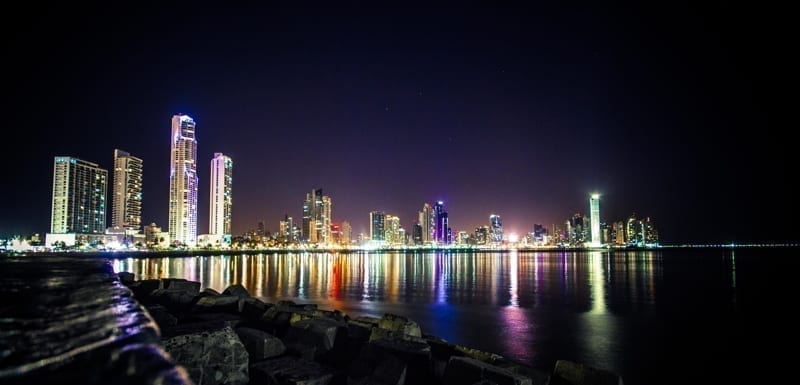
I carried on with my research online and eventually found my way to Kathleen Peddicord’s book, “How To Retire Overseas,” which included a section on Panama.
When most people, including, I admit, me at first, hear Panama, they think of canals, hats, and pineapple-faced dictators from the 1980s. Yes, there is a canal (it’s one of the main reasons Panama has been shielded from the headwinds of international finance these past several years), but Panama hats are actually from Ecuador and Manuel Noriega was in prison for more than 25 years before he died in 2017.
Modern Panama, I came to learn in my research, is politically stable, a hub of international business and banking, and one of the fastest-growing economies on the planet. Its infrastructure, from roads to subways and internet speeds, is unparalleled in Central America.
Riding into Panama City from Tocumen International Airport (incidentally Latin America’s busiest hub), the skyline looks more like Singapore or Hong Kong than some Third World outpost.
Even with all my research, I was not prepared for the Panama I encountered when we first arrived. Once you get out of hectic Panama City, you find beautiful tropical islands fringed with white sand and coconut palms and mountain retreats where howler monkeys wake you up in the morning and migrating songbirds sing you to sleep at night.
The doctors we have encountered in Panama City so far are top-notch, and everyone is about as friendly as they can be.
No question, April and I made this move for financial reasons. Doing the math, the decision to relocate to Panama for retirement was a no-brainer.
My monthly pension of US$2,935 (after federal income taxes) was not going to cut it in Texas. April calculated our Austin expenses to be in the neighborhood of US$5,260 a month.
If we stayed in Texas, I would have to pick up substitute teaching slots and April would have to take on freelance bookkeeping jobs.
That’s not how this is supposed to go. After working and paying taxes our entire adult lives, we were supposed to be able to relax a little and do things because we wanted to do them, not because we had to, during the next stage in life.
Deciding Where To Live In Panama
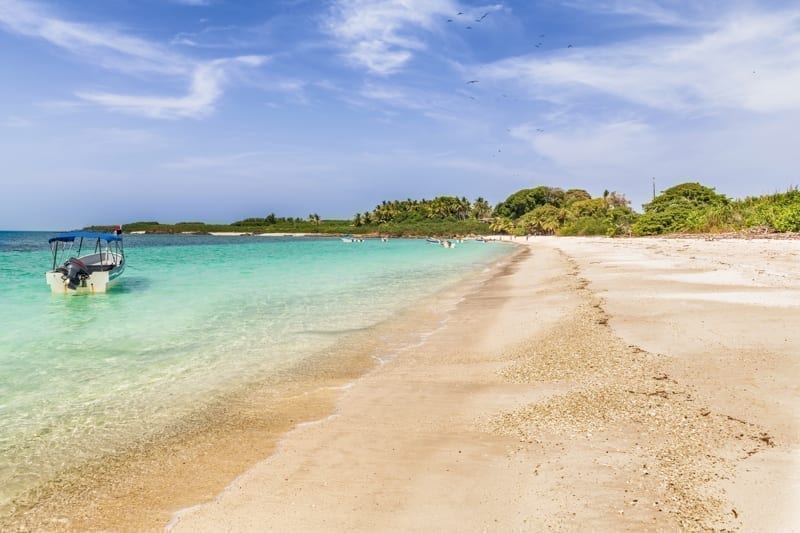
Kathleen’s book included budgets for each country featured, including Panama. And, as Kathleen explained, even within little Panama, the costs of living vary widely.
The cost of living in Boquete is about US$1,500 a month, well within our budget, but Boquete isn’t on the ocean and our dream has always been to retire near the water.
The budget for the City Beaches west of Panama City (Coronado, etc.) are in the US$2,500 a month range. We could afford that, but it’d be a little tight.
Then I read about Panama’s Azuero Peninsula, where the cost of living is much lower.
April wasn’t sold on the idea of retiring to another country as quickly as I was, but she’s an accountant. She came around when she did the numbers.
The monthly budget she projected for us living on the Azuero coast was about US$1,500.
As I said, once we worked through the math, it was a no-brainer to move to Panama.
Our families thought we were nuts, but we hopped on a plane and put in motion the plan that would land us in the retirement of our dreams in Panama.
Get Your Free Panama Report Today!
Simply enter your email address below and we'll send you our FREE REPORT - Live And Invest In Panama: The #1 Retirement Haven In The Americas.
What Living In Panama Is Like
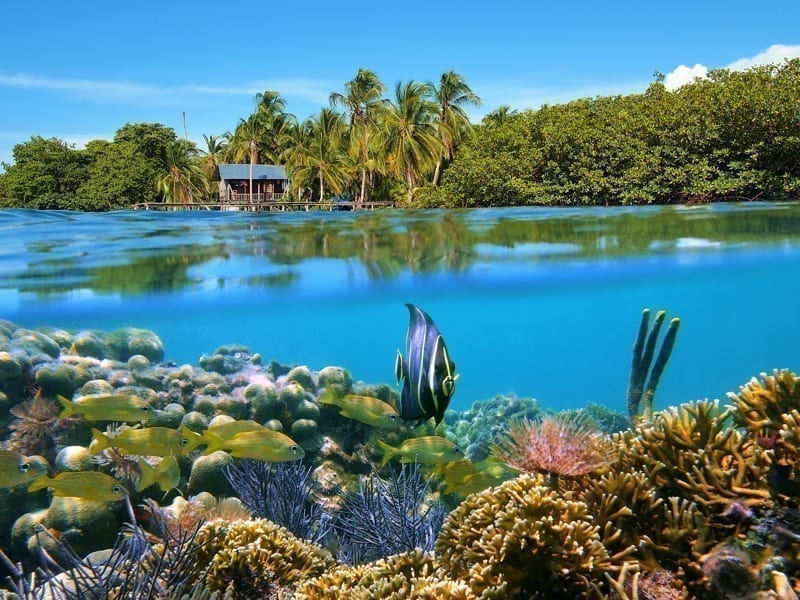
Our move to Panama has not been without its hiccups, of course. April packed high heels and winter clothes for the tropics; I packed kitchen knives and not enough clothes.
Our cat was almost lost in a parking lot in Houston and we had to change flights at the last minute because our dog’s traveling crate was too big to fit through the plane’s cargo doors…
We defaulted into the idea of retiring to another country out of desperation. We weren’t going to be able to retire at all in Texas. Anything seemed better than that.
Now, six years into our move in Panama, settled finally, after a series of in-Panama moves, into our custom-built dream house with a view of the crashing Pacific coast, I can tell you that the real upside of this has nothing to do with money. The real upside is the experience itself.
After our exciting New Year’s Eve, on New Year’s Day 2015, we found a boat captain in Playa Arena and asked if he could take us out to nearby Isla Iguana for the day. He agreed with a smile and walked us over to his little boat. I sized up the boat… compared it to the crashing waves offshore… and, for a moment, hesitated.
The old me… the Texas me… wouldn’t have gotten in that little boat. The new me… the Panama me… mustered the courage to keep up with our young friends and climb aboard. We spent Jan. 1, 2015, snorkeling and laying in the sun.
It was a New Year’s like no other. And, for me, the first of many more just like it.
Sincerely,
Peg Fairbairn
Contributor, Overseas Living Letter

